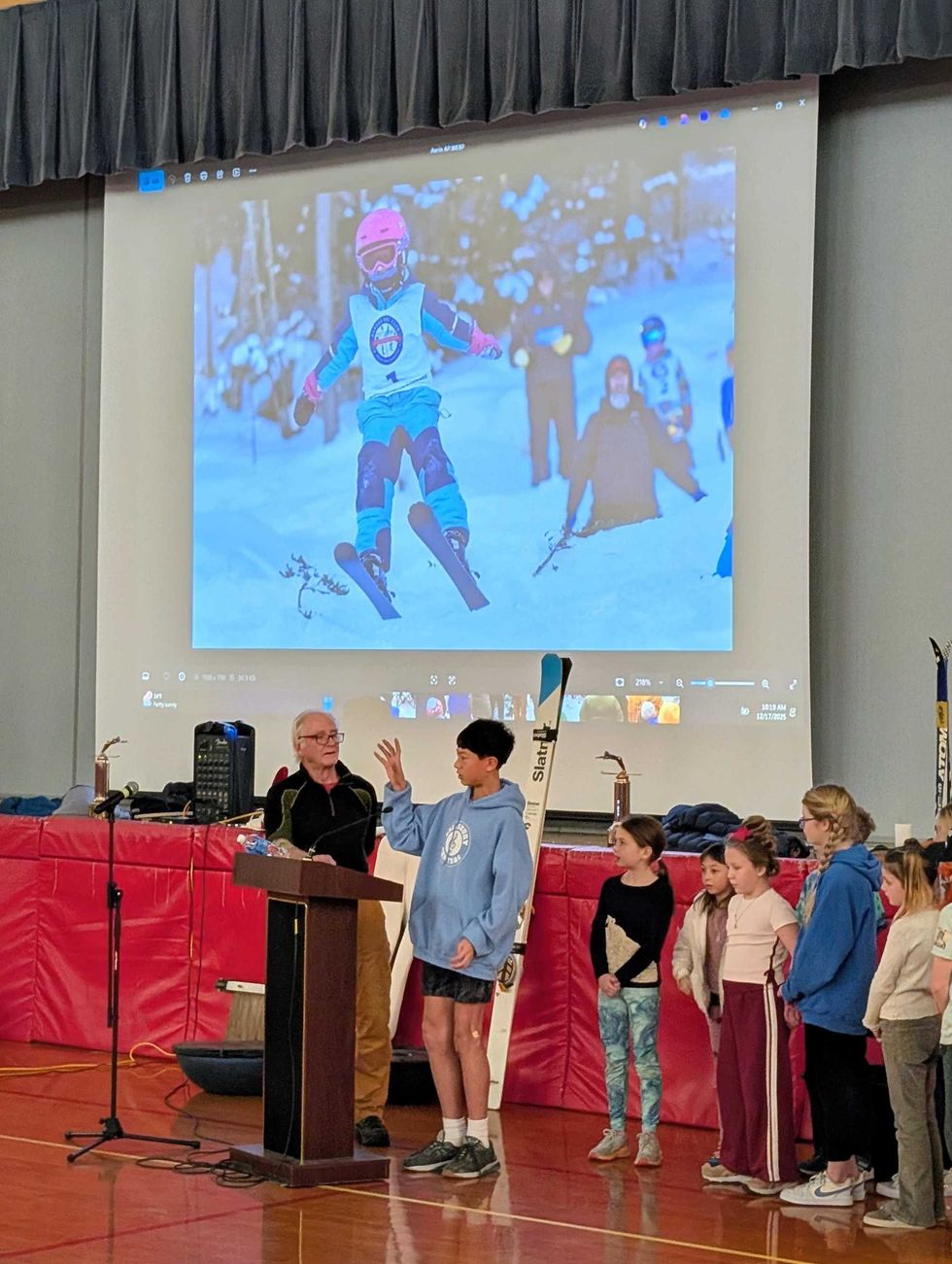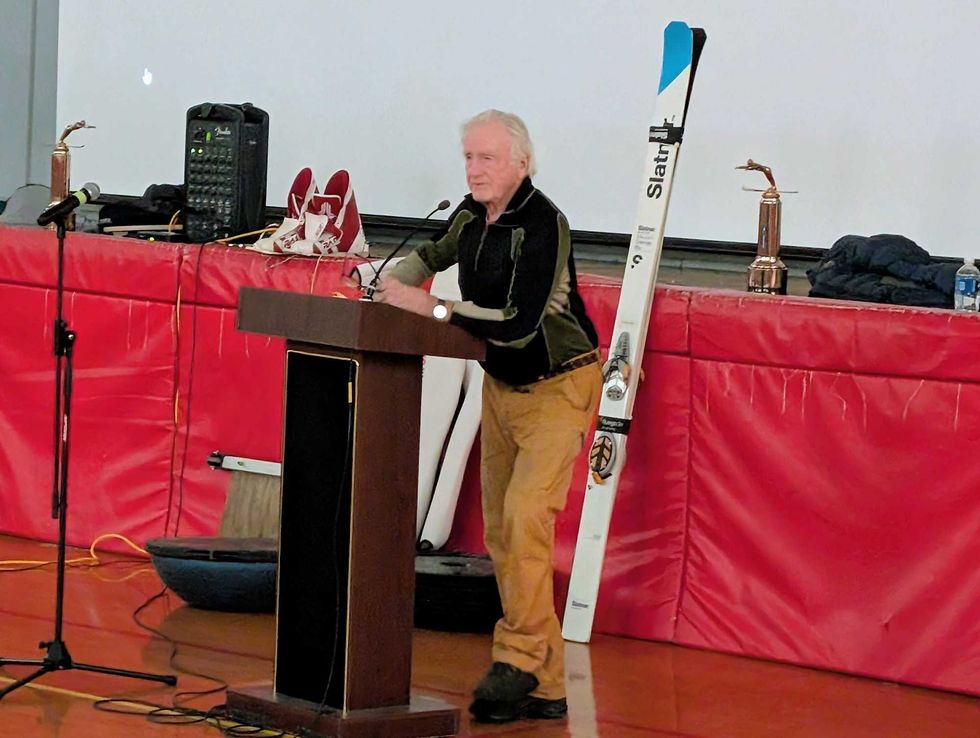Dina La Fonte at Mountainside and the rise of the ‘sober curious’ movement

Dina La Fonte
Photo by Dina La Fonte

Dina La Fonte
The “sober curious” movement has gained momentum in recent years, encouraging individuals to explore life without alcohol—whether for health reasons, personal growth, or simple curiosity. Dina La Fonte, a certified recovery coach, is the Senior Business Affairs Associate at Mountainside, an alcohol and drug addiction treatment center with a holistic approach to wellness that has several locations, including the one in Canaan, Connecticut. With nearly five years of sobriety, La Fonte blends professional expertise with lived experience, making her a powerful advocate for recovery.
Like many, La Fonte’s path to recovery was not just about removing alcohol; it was about rediscovering herself. “Once you get sober from a substance, whether it’s alcohol, drugs, gambling or what have you, emotional aspects of change come into place,” she explained. “It’s not a hard stop; it’s a continued process of integration and struggle.” Her own journey has led her to a career in recovery coaching, allowing her to help others find their own path.
“What I love about my work at Mountainside is that it allows me to be who I am without forcing me into a mold,” she said. “In recovery, we identify our authentic voice, establish boundaries, and clarify what we truly want.”
La Fonte explained that the rise of the “sober curious” movement may reflect a cultural shift in how we approach alcohol and self-care. La Fonte attributes this change to open conversations that break down stigma. “Even five or six years ago, admitting you had a problem came with embarrassment,” she said. “Now, the more we discuss it, the more people realize they’re not alone.” This newfound openness has perhaps made it easier for some individuals to explore sobriety and even do so without the pressure of a lifelong commitment.
Beyond emotional well-being, La Fonte also noted the physical benefits of sobriety. “It wasn’t immediate, but after a year, I noticed my skin clearing up, my energy improving, and my confidence growing,” she recalled. “Casual drinking dehydrates the skin, affects sleep, and contributes to inflammation. When people realize how much better they feel without alcohol, they want to hold onto that.”
In her role at Mountainside, La Fonte has expanded beyond coaching to influence organization-wide initiatives. “I still work directly with clients, but now I also help evolve how we support them,” she said. “Mountainside takes a holistic approach—integrating yoga, grief therapy, sound baths, and more. It’s not about pushing people through a system; it’s about meeting them where they are.”
La Fonte uses her social media platform as a “micro-influencer” to promote sober living and wellness. “I focus on positivity in sobriety—whether it’s skincare, self-care, or mental health. I test vegan and cruelty-free products, but I only promote what aligns with my values.”
For those exploring sobriety, La Fonte’s message is simple: “I’m not here to judge. I’m here to help.” She encourages open conversations and meeting people where they are. “If you’re curious about sobriety, let’s talk. I don’t need to know you to be proud of you. I don’t need to know you to love you. I already love you.Just reaching out is a huge step.”
With voices like La Fonte’s leading the conversation, perhaps the sober curious movement is more than a trend—it’s a cultural shift redefining what it means to live fully and authentically.
To contact Dina La Fonte, email her at dina.lafonte@mountainside.com, explore the Mountainside website at mountainside.com, or follow La Fonte on Instagram @dinalafonte
John and Diane Degnan plan to convert the warehouse at the back of the property into their primary residence, while leaving the four-unit building in the front available for long-term rentals.
KENT — A proposal to convert an old warehouse into a residence on Lane Street in downtown Kent has become more complicated than anticipated, as the Planning and Zoning Commission considers potential unintended consequences of the plan, including a proposed amendment to Village Residential zoning regulations.
During a special meeting Wednesday, Dec. 10, attorney Jay Klein of Carmody, Torrance, Sandak and Hennessey presented the proposal on behalf of John and Diane Degnan, who have lived at 13 Lane St. since 2022.
The Degnans are seeking to convert an industrial structure at the rear of their property, currently used for storage, into their primary residence, while keeping a four-unit building at the front of the lot available as affordable rental housing.
What appears to be a straightforward proposal has been complicated by a murky zoning history and regulatory constraints tied to the property’s designation.
Neighbors, however, say the review process has dragged on unnecessarily and are urging the commission to move forward with a project they believe would benefit the street.
“Is it normal for zoning to go this far?” asked Lane Street neighbor Lili Mason during the public comment period at the Dec. 10 meeting. “This is all ridiculous as far as I’m concerned.”
Mason’s frustrations were echoed by other testifiers, who voiced unified support for the Degnans’ project and praised the couple’s character:
“[They’ve] changed the neighborhood for the better,” said Ed Raftery. “Don’t penalize people who are trying to make improvements,” said Tamara Potter, another Lane Street resident, who recalled overpowering shellac fumes drifting through the neighborhood when the warehouse was used to store pleasure boats.
According to Land Use Office records, the structure has previously housed an auto body repair shop, an aquarium store, a mail-order book business, sign production and a skin care mail-order operation, among other uses.
“A commercial building on this street just doesn’t fit,” Potter emphasized, alluding to the fact that the conversion of the warehouse to a residence would essentially prohibit the possibility of a future industrial use on the property.
Commission members largely agreed with residents that the proposal — combining a new residence with affordable rentals — would be a positive change. Several commissioners, however, raised concerns about the applicant’s approach, particularly a proposed amendment to the section of regulations governing special permits in the Village Residential zone.
With guidance from zoning expert Glenn Chalder and town attorney Michael Ziska, the commission pushed back on aspects of the amendment, which would add a new section specifically addressing conversions of industrial or commercial buildings to residences. The proposed language included specialized rules related to density, parking and discretionary waivers of certain zoning requirements.
New commission member Donna Hayes, who was once the town’s land use director, explained that regulations designed for a particular project can have unintended effects elsewhere in town:
“One of the things that [residents] need to understand is that a regulation is written not for a specific piece of property but for a complete zone. And it’s written not for any particular person, but it’s written for the future as well.”
Ziska offered a similar warning: “Once regulations are changed, things happen. Things happen that nobody can expect.”
He expressed doubts about several aspects of the applicant’s proposal, though indicated general support for the concept and suggested there might be a simpler and safer way forward.
Klein said the Degnans’ goal is to improve the property “utilizing existing site resources” while bringing the entire parcel into zoning compliance. Ziska noted that the four-unit building at the front of the lot was never formally approved by a zoning officer — an issue that will need to be resolved if the units are to be used as affordable rentals. Chalder and several commissioners recommended that the applicant work with Kent Affordable Housing in coming up with a plan for the units, which Klein said would be priced between $950 and $1,800.
Klein, Chalder and Ziska ultimately agreed to meet later in the month to come up with a path forward agreeable to both the Degnans and the town. The hearing was left open, and will continue at P&Z’s next regular meeting on Jan. 8.
Students of Salisbury Central School watch ski jumpers soar during an assembly with Salisbury Winter Sports Association Wednesday, Dec. 17.
SALISBURY — Representatives of Salisbury Winter Sports Association gave a presentation at Salisbury Central School Wednesday, Dec. 17.
Former U.S. Olympic coach Larry Stone explained the fundamentals of the unique sport of ski jumping and its long history in Salisbury, where he learned to jump.
“When I was growing up here there were actually eight ski jumps just in this town in addition to the three down at Satre Hill,” he said. He noted that this winter will be the 100th year of Jumpfest at Satre Hill, named for the Satre brothers who moved from Norway in the 1920s. “They brought their sport with them and the first ski jump was actually when one of the Satres skied off of a barn roof in the center of Salisbury to show people how to do it.”
Mentioning the upcoming Winter Olympics in Cortina/Milan, Italy, Stone spoke of legendary Salisbury ski jumper Roy Sherwood who competed at Cortina in the 1956 Olympics.

Students at SCS saw videos of ski jumpers training and competing. Stone invited up students who had jumped at Satre Hill and 14 stepped forward.
One student was Aerin Sheil, who was asked what it feels like to jump: “It kind of feels like you’re flying. It’s a really good feeling.”
Gus Tripler, another student, said, “It’s like you’re suspended in the air and can see everything.”
He said his record distance of 18 meters was set in Vermont.
The student remarks gave way to closing comments that emphasized the school’s partnership with the Salisbury Winter Sports Association.
“Our partnership with SWSA is one of the most incredible things about Salisbury Central School,” Principal John Conklin said as he closed the assembly. He encouraged the students to attend Jumpfest Feb. 6 to 8.

The Community Closet at HVRHS is open for students to take clothes for any reason during the school day.
What started with one unexpected donation of clothes has grown into a quietly impactful resource for all students at HVRHS: the Community Closet. Now located in a spacious area above the cafeteria, the closet offers free clothing to any student for any reason.
The idea began a few years ago when a community member reached out to the former superintendent wondering if anyone at the school could benefit from used clothing that would otherwise go to waste. The superintendent then got in contact with Rachel Novak, the school social worker. “Once I had all those bags of clothes in my room, I was like, ‘I should put this in a space,’” Novak said. Her simple idea eventually became a full-sized closet accessible to all students.
From the beginning, Novak envisioned the closet as an inclusive space. “It’s open to anybody, it’s not just based on economic needs,” she said. Sustainability also plays a role. “Thinking about the environment, some students like to thrift and just get clothes that way,” Novak said.
After the initial donation, contributions continued to grow. “I reached out to our staff members and faculty,” Novak said. The most consistent donations come from the faculty at HVRHS and a few community members who learned about the closet. Finding teenage-appropriate clothes has been a challenge. “I get a lot of donations that are nice, but I don’t think teenagers would want to wear them,” Novak said.
Another ongoing obstacle has been awareness. Many students don’t know the closet exists at all. “That’s been the hard part,” Novak said. “Getting it out to the wider community of the school.” Novak is looking for students and staff to spread the word. “It helps because our school nurse knows and other faculty members,” she said. “When they know a student needs something, they just bring them up.”
Looking ahead, she hopes to promote the space more actively. “When we come back from this break, I do plan to … get fliers and all that up and going,” Novak said. There may even be an upcoming expansion — she has discussed the possibility of turning part of the area into a food pantry. “That would be more of a need-based system for students,” she said. “But right now, promoting it is where I’m at.”
The Community Closet is well-stocked currently. “Just because of the amount of clothes I have, I’m not accepting any more donations until I clear some stuff out,” Novak said. She is still willing to make room for more fashionable, teen-friendly items donated by students. “That way I’ll have more teenager approved clothes.”
Above all, she wants students to know that no one is limited to using the space. “Sometimes there’s a stigma around it … like, ‘I don’t need help. I don’t want to take away from anybody else that may need it,’” Novak said. Due to the amount of clothes, students should feel welcome to use the closet for any reason. Some students even grab items last minute for sports and activities. “It’s important for kids to know it’s for everyone.”
Whether a student wants to thrift clothes sustainably, forgot to pack clothes for an after-school practice, or is in need of a new outfit, the Community Closet is a resource for all.
Sophomore Eliana Lang enjoys her Housy Shack cookie.
Now in its second year, the Housy Shack is a hit among students. The special education department-run store that sells warm cookies, drinks and other snacks to students and teachers draws people to a room in the back hallway every time it’s open.
The smell of warm cookies welcomes visitors to the store with snacks, drinks and even Housy merchandise for sale. The cookies are definitely the favorite, sometimes lines go out the door to get one before they sell out.
The cookies are so popular that the store had to increase prices from 50 cents to a dollar and implement a four cookie per person maximum. The Shack sells about 40-100 cookies per day and has about 20-60 HVRHS customers visiting per day.
Julie Browning and Heather Strid, two of the HVRHS faculty members that help run the Shack, said their goal was to create real-world job experiences as well as real-world shopping experiences for students at HVRHS. “Learning the skills to work in the world can be taught in a classroom, but the lessons are more meaningful and valuable when they are applied in real work situations, which is what we create through the school store,” Browning said.
The original purpose for the store seems to be working, as several students are learning important skills. Students said the store taught them skills like counting money, checking inventory and cleanliness along with social skills and customer service that could help in the professional world after high school.

As the store quickly became a hit, organizers were faced with the challenge of finding funding. “When we started planning to start the school store two years ago we needed money to buy equipment, supplies and food to start it up but were not sure how to get it,” Browning said. “Mrs. Strid came up with the idea of applying for a grant from the 21st Century Fund to help us get started and they were so generous.” That grant has been crucial to the success and growth of the school store.
Not only does the Housy Shack benefit the special education department, students said it fosters a sense of community throughout the school. “School store cookies are my favorite thing ever. They brighten up my day,” said Eliana Lang, a sophomore at HVRHS. Dayana, one of the student staffers at the Housy Shack, said her favorite part of working in the school store is when students come in to make purchases. She enjoys talking to them and ringing up their orders on the cash register. The Housy Shack brings people together and offers the opportunity for students to connect with each other.
As the school year continues, the members of the school store look forward to expanding their inventory by creating and selling a variety of Housy merchandise — t-shirts, sweatshirts, water bottles, and more. “I have had several students put in requests for certain hats, key chains, etc. … so there will be more of that to come,” Browning said. Last school year, profits were all invested back into the school store. “This year we are hoping to make more of a profit and will look to use the money that we make for field trips, outings as well as opportunities to donate and give back to the community,” Browning said. They also would like to use the school store to fundraise for other causes. “Right now we are collecting donations for The Little Guild Animal Shelter, so if anyone has pet supplies they would like to donate please drop them off in exchange for a cookie,” Browning said.